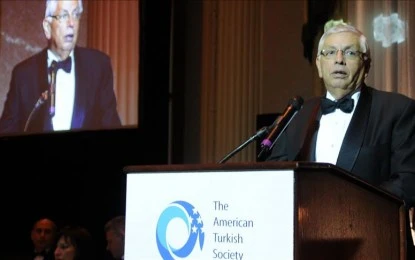This is the first part of the four-part series of The Future of Media and Information Literacy (MIL) in the Philippines. This article will delve into the current state, emerging trends, challenges, and opportunities in MIL.
To navigate the vast sea of information among Filipinos, they are required to have the ability to access, analyze, evaluate, and create media in various forms. This is where Media and Information Literacy (MIL) steps in. MIL empowers individuals, ensuring they become critical thinkers and responsible media consumers and producers, especially with the rapid evolution of technology and media consumption habits.
Fortunately, the Philippines integrated MIL into its curriculum. However, with the advancement of technology, the contents of the subjects become obsolete and they require constant updates.
This article explores the current state of MIL in the country, emerging trends, challenges, and opportunities, offering insights into how the nation can continue to advance its MIL framework.
Current State of Media and Information Literacy (MIL) in the Philippines
The Philippines has made commendable strides in integrating Media and Information Literacy (MIL) into its educational framework. This initiative is designed to equip students with the necessary skills to critically assess and responsibly engage with media. These competencies can develop a generation of individuals who are not only informed but also capable of producing responsible media content.
However, several challenges still persist. One of the most pressing issues is the inadequate training of teachers. Many of them lack the necessary resources and understanding to effectively teach MIL. This gap in training often results in a limited comprehension of MIL’s full scope and significance among educators. Sadly, this gap produces varied effectiveness on certain demographics. The more well-off the schools, the more effective MIL instruction is taught.
To address these issues, there is a need for a more structured and consistent approach to MIL education regardless of the school’s background. However, this requires proper resource allocation.
Nevertheless, there are challenges that need to be addressed and opportunities to exploit.
Challenges and Opportunities in Media and Information Literacy (MIL)
The promotion of Media and Information Literacy in the Philippines is not without its challenges. However, there are significant opportunities that can enhance MIL education across the country.
Challenges
• Misinformation. This is the main challenge of modern democracies. When social media became mainstream, it decentralized information. As a result, there is a lack of checks and balances of information and editorial standards to prevent misinformation. That is the design flaw of the democratization of the medium. It allows bad actors to skew public opinions to amplify the voices of special interests.
• Digital Divide. This divide stems from the lack of economic resources on the end of the households to afford technology so that they can practice digital literacy. This disparity limits their access to information and hinders their ability to develop essential digital literacy skills.
• Resource Constraints Inadequate teaching materials and limited teacher training further exacerbate the challenges faced by MIL education in the Philippines. Without the necessary resources, educators are often ill-equipped to provide high-quality MIL instruction. Hence, students experience fragmented and inconsistent educational standards.
Opportunities
• Innovative Educational Programs. This includes leveraging technology in order to provide students with recent and engaging lessons. However, innovation should be complemented with inclusion so that all students of different backgrounds can be accommodated.
• Community Engagement. Understand that instilling MIL among people is a collective effort so everyone must do their part to make people think critically. However, this also requires people to consider cultural barriers and logistical issues to make the initiative effective.
• Policy Development. This requires policymakers to prioritize MIL initiatives. From curriculum planning to execution, it must be done with high-quality standards. However, they have to ensure that there are enough resources and equal application to ensure that the policy will be integrated fully across the board not just on specific regions or backgrounds.
Emerging Trends in Media and Information Literacy (MIL)
Though it is clear that the Philippines is still addressing those issues and seizing opportunities to improve MIL instruction, the country has to move quicker because innovation is faster than before. Hence, the mode of instruction that they are teaching may be obsolete.
For example, it is easier to create content through artificial intelligence. It is literally an automated writing intern where students will just write some prompt and the chatbot produces essays.
Another example is social media algorithms which feed users content that they are constantly engaging with. This is not bad per se but it creates an echo chamber where people develop their own biases and avoid taking other perspectives. In effect, it creates social divisions.
Lastly, there are new technologies introduced in the market such as Virtual Reality (VR), Augmented Reality (AR), and the Internet of Things (IoT). They are interactive and immersive technologies. In relation to MIL education, this is a new topic in itself that must be developed and this begs the question of whether the Philippines has a response to it in its own context. Moreover, it means additional expenses to the education budget. This is not a luxury but a necessity to keep up with global competitiveness.
Conclusion
The future of Media and Information Literacy (MIL) in the Philippines is at a pivotal point, driven by the rapid evolution of the digital landscape. As technology continues to advance, the need for robust MIL education becomes increasingly urgent. The Philippines has made significant progress in integrating MIL into its educational framework, but challenges such as misinformation, the digital divide, and resource constraints remain.
However, by embracing emerging trends, leveraging new technologies, and fostering community engagement, the country can overcome these challenges and seize the opportunities that lie ahead. A concerted effort from educators, policymakers, and technology developers is essential to creating a media-literate society capable of navigating the complexities of the digital age. As we look to the future, the continued development and promotion of MIL in the Philippines will play a crucial role in shaping an informed, responsible, and empowered citizenry.
This press release has also been published on VRITIMES




